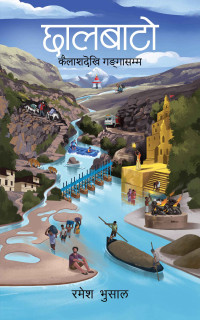Books
Famed lyricist makes her book debut
Sheetal Kadambini, known for writing songs like ‘Kaha Thiyau Timi’ and ‘Oye Jhuma Jhumkawali’, talks about her new novel ‘Sinka Pauru’.
Apecksha Gurung
Sheetal Kadambini Gurung is many things at once. She is a singer, lyricist, and music composer. Known for writing songs like ‘Kaha Thiyau Timi’ and ‘Oye Jhuma Jhumkawali’, Gurung is one of the few female lyricists of our times. She occasionally also dabbles in writing ghazals. Recently, Gurung has made her debut as a writer, publishing a book called ‘Sinka Pauru’ which is based on the Gurung community.
From a young age, Gurung found comfort in music. She remembers listening to songs in Radio Nepal and getting inspired to write some songs on her own. In 2009, she came out with her eponymous album ‘Kadambini’. Singers like Shiva Pariyar, Anju Panta, Swaroop Raj Acharya, and Jagdish Samal lent their voices to her lyrics for the album.
Gurung’s music can be classified as classical modern. She believes there are distinctions between writing ghazals and songs. “Ghazal writing needs rules and a proper format, whereas songs flow naturally, making it easier for me to create them.” Talking about inspirations for her songs she says, “I pay close attention to things around me. If a nice theme strikes, I make notes so I can finish it later.”
Gurung also enjoys reading a lot of books in her leisure time. When asked about her inspirations, she says, “Madhav Ghimire is my idol–his songs are direct but contain profound ideas.” She also likes books by Buddhisagar, Subin Bhattarai, Amar Neupane, and Rabindranath Tagore. She is also fond of poetry—especially poems from the Urdu language.
Gurung was extremely ecstatic when her first novel ‘Sinka Pauru’ came into the market. According to her, her book is a window into all things Gurung culture—from the unique marriage ceremony, to the dresses and dialects, among others. “Everything one wants to know about the culture is in the book,” she says. Instead of sticking to the archaic depictions of Gurung culture, she wants to show it as dynamic and ever evolving. “I have written this book relating to things that are happening in our society,” says Gurung.
The book was published by the Yatra publishing house. Khemjung Gurung, whom she regards as her brother, assisted her greatly in the publishing process. She was also overwhelmed by the support of the Gurung community who accepted and appreciated the book. “As ‘Sinka Pauru’ is about my culture since I feel extremely close to it,” says Gurung.
She reveals that it took her around six to seven years to write the book and she particularly enjoyed writing the protagonist, Mausami. The novel revolves around her life–from childhood to adulthood. “Mausami as a young girl going to school and making friends was the most fun to write,” she says.
Gurung also shares that some parts of the story in the book were difficult to write. She resonates with the troubles Mausami goes through. “The most challenging part was to write about Mausami’s troubled marriage. As I wrote of her difficulties, I started crying along with her,” she says.
In the book, Gurung also hints towards the tendency of young people from the Gurung community to enlist in the military and serve overseas in order to financially support themselves and their families. This process of migration and search for identity manifests in Mausami as well, as she goes against social ideals and moves abroad to become independent.




 7.12°C Kathmandu
7.12°C Kathmandu










